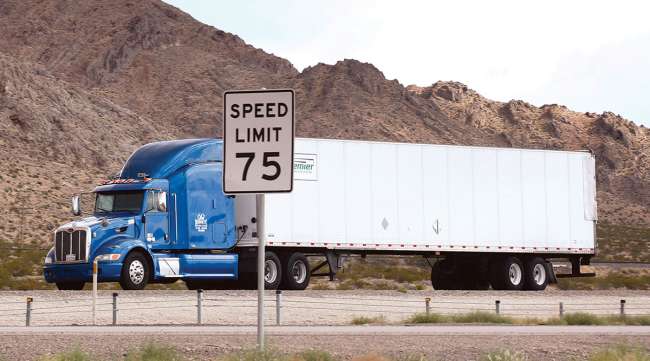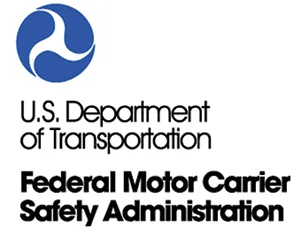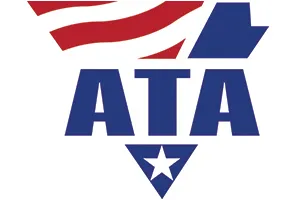Senior Reporter
FMCSA, NHTSA Delay Posting of Significant Rulemakings

[Stay on top of transportation news: Get TTNews in your inbox.]
Federal trucking regulators are delaying until next year a supplemental heavy-duty truck speed limiter proposed rule, an automatic emergency braking final rule and a proposed new truck driver seizure standard, according to new regulatory agenda documents.
Originally projected for May of this year, the National Highway Traffic Safety Administration and Federal Motor Carrier Safety Administration’s joint speed limiter proposal is being delayed for the second time and is now projected for publication in May 2025. The proposal has been percolating for years.
The NHTSA/FMCSA joint rulemaking on AEB has been dormant since its July 2023 proposal. The final rule is now slated for publication in January 2025.
Discussions about a possible truck driver seizure standard have been circulating among FMCSA’s medical review board members in recent years. The proposed standard would update the physical qualification standards for individuals with an established medical history or clinical diagnosis of epilepsy or any other condition that is likely to cause loss of consciousness or any loss of ability to control a commercial motor vehicle. As part of the agency’s ongoing regulatory reform efforts, FMCSA has said it is proposing to reduce the burden on individuals who have experienced a seizure or who have been prescribed anti-seizure medication. The seizure standard proposal is now expected in June 2025.

RELATED: US to Require Automatic Emergency Braking on New Vehicles
The original joint speed limiter proposal did not specify how high a limit would be set for a truck’s top speed. The limiters would be required for trucks weighing more than 26,000 pounds engaged in interstate commerce; the limiters would be equipped with an electronic engine control unit capable of governing the maximum allowable speed for the service life of the vehicle, FMCSA said.
Many in-depth responses were submitted in response to the complex 288-page notice of intent proposal, which was mandated in the Infrastructure Investment and Jobs Act.
In a sampling of more than 15,000 public comments, large motor carriers and trade associations indicated general support, contingent on the top speed setting ultimately adopted. However, a large number of small truckers and independent owner-operators said limiting speeds would be unsafe and have a negative effect on their businesses.
The makers of Transport Topics' updated Top 100 For-Hire Carriers list examine how the freight market slump has altered the competitive landscape in trucking. Tune in above or by going to RoadSigns.ttnews.com.
FMCSA said it is continuing to engage in “subsequent consultation” with NHTSA and will consider whether additional regulatory actions should be taken “concerning CMV manufacturer requirements.”
Organizations representing heavy trucks were generally supportive of the joint proposed rule to require AEB technologies on heavy trucks — with caveats.
Comments from some, including dozens of individual truck drivers and a few of the organizations that represent them, dubbed the idea of a sudden AEB stop going 50 or 60 mph as potentially dangerous.

The idea of including AEB technologies in Classes 3-6 trucks is not ready for prime time, many commentators said.
Written comments by American Trucking Associations were generally supportive of the AEB rule but emphasized that the technology needs to be driver-friendly and well-tested, cautioning NHTSA and FMCSA to not discount driver concerns over false activations, adverse weather performance or unintended consequences.
Since at least 2020, FMCSA has been reviewing the agency’s seizure medical policy with an eye toward possibly eliminating a requirement that truck drivers with the condition request a special exemption from the agency.
In an update at an April 2020 meeting of the medical review board, Christine Hydock, chief of FMCSA’s medical programs division, said the agency had planned a review of the literature related to recurrence for commercial motor vehicle drivers who have experienced at least one seizure.

Buttigieg
Also, FMCSA said it would contract outside research on the condition, which currently disqualifies a driver but allows them to seek an exemption with the agency. Obtaining an exemption can be exhausting and can result in drivers waiting months for approval to get behind the wheel.
Several safety groups sent a letter to Transportation Secretary Pete Buttigieg saying they were “dismayed, disappointed and deeply disturbed” by the Department of Transportation’s inability to complete the truck safety rulemakings, which DOT had committed to at the beginning of the Biden administration.
The groups noted that the speed limiter rule lacks a congressional mandate and can be withdrawn by future administrations that may not share Biden’s professed commitment to safety.
The AEB rule is a “highly consequential rulemaking mandated by the Infrastructure Investment and Jobs Act to have been completed within two years,” the safety groups said.
While no specific reason for the delay was provided by FMCSA, in a statement, the agency noted that regulatory and deregulatory actions are estimates and the timelines are not definite.
“There are a number of reasons why the timeline may shift,” FMCSA said. “Those reasons may include additional time for research and analysis, stakeholder engagement, and further review of public comments.
At press time, NHTSA did not respond to a request to explain the reasons for the delays.
Want more news? Listen to today's daily briefing below or go here for more info:





